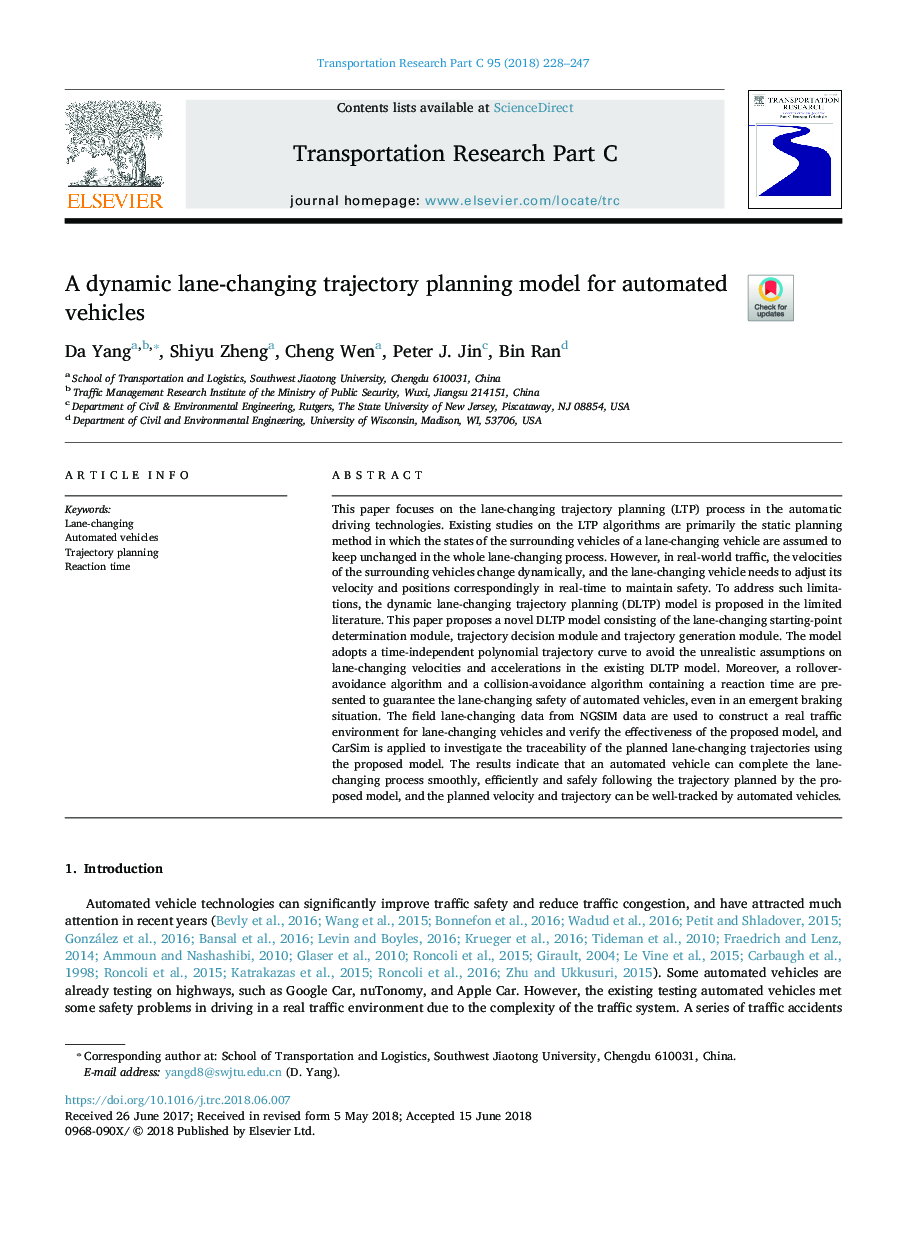| کد مقاله | کد نشریه | سال انتشار | مقاله انگلیسی | نسخه تمام متن |
|---|---|---|---|---|
| 6935668 | 1449654 | 2018 | 20 صفحه PDF | دانلود رایگان |
عنوان انگلیسی مقاله ISI
A dynamic lane-changing trajectory planning model for automated vehicles
ترجمه فارسی عنوان
یک مدل برنامه ریزی مسیر مسیریابی پویا برای وسایل نقلیه خودکار
دانلود مقاله + سفارش ترجمه
دانلود مقاله ISI انگلیسی
رایگان برای ایرانیان
کلمات کلیدی
تغییر خط، وسایل نقلیه خودکار، برنامه ریزی مسیر زمان پاسخ،
موضوعات مرتبط
مهندسی و علوم پایه
مهندسی کامپیوتر
نرم افزارهای علوم کامپیوتر
چکیده انگلیسی
This paper focuses on the lane-changing trajectory planning (LTP) process in the automatic driving technologies. Existing studies on the LTP algorithms are primarily the static planning method in which the states of the surrounding vehicles of a lane-changing vehicle are assumed to keep unchanged in the whole lane-changing process. However, in real-world traffic, the velocities of the surrounding vehicles change dynamically, and the lane-changing vehicle needs to adjust its velocity and positions correspondingly in real-time to maintain safety. To address such limitations, the dynamic lane-changing trajectory planning (DLTP) model is proposed in the limited literature. This paper proposes a novel DLTP model consisting of the lane-changing starting-point determination module, trajectory decision module and trajectory generation module. The model adopts a time-independent polynomial trajectory curve to avoid the unrealistic assumptions on lane-changing velocities and accelerations in the existing DLTP model. Moreover, a rollover-avoidance algorithm and a collision-avoidance algorithm containing a reaction time are presented to guarantee the lane-changing safety of automated vehicles, even in an emergent braking situation. The field lane-changing data from NGSIM data are used to construct a real traffic environment for lane-changing vehicles and verify the effectiveness of the proposed model, and CarSim is applied to investigate the traceability of the planned lane-changing trajectories using the proposed model. The results indicate that an automated vehicle can complete the lane-changing process smoothly, efficiently and safely following the trajectory planned by the proposed model, and the planned velocity and trajectory can be well-tracked by automated vehicles.
ناشر
Database: Elsevier - ScienceDirect (ساینس دایرکت)
Journal: Transportation Research Part C: Emerging Technologies - Volume 95, October 2018, Pages 228-247
Journal: Transportation Research Part C: Emerging Technologies - Volume 95, October 2018, Pages 228-247
نویسندگان
Da Yang, Shiyu Zheng, Cheng Wen, Peter J. Jin, Bin Ran,
